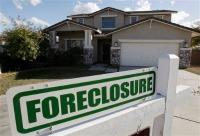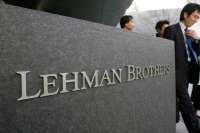Tag: Lehman Brothers
-

/
4582 SEEN/
Ex-SEC chief now helps companies navigate post-meltdown reforms
By Lauren Kyger, Alison Fitzgerald and John Dunbar
Center for Public Integrity
On March 11, 2008, Christopher Cox, former chairman of the Securities and Exchange Commission, said he was comfortable with the amount of capital that Bear Stearns and the other publicly traded Wall Street investment banks had on hand. Days later, Bear was gone, becoming the first investment bank to disappear in 2008 under the watch of Cox’s SEC. -

Subprime lending execs back in business five years after crash
By Daniel Wagner
Center for Public Integrity
Andy Pollock rode the last subprime mortgage wave to the top then got out as the industry collapsed and took the U.S. economy with it. Today, he’s back in business. -

Ex-Wall Street chieftains living large in post-meltdown world
By Alison Fitzgerald
Center for Public Integrity
Five years after the near-collapse of the nation’s financial system, the economy continues a slow recovery. Many of the top Wall Street bankers who were largely responsible for the disaster are also unemployed. But they walked away with millions and they’re juggling their ample free time between mansions, golf, skiing and tennis
Support Florida Bulldog
If you believe in the value of watchdog journalism please make your tax-deductible contribution today.
We are a 501(c)(3) organization. All donations are tax deductible.

Join Our Email List
Florida Bulldog delivers fact-based watchdog reporting as a public service that’s essential to a free and democratic society. We are nonprofit, independent, nonpartisan, experienced. No fake news here.
